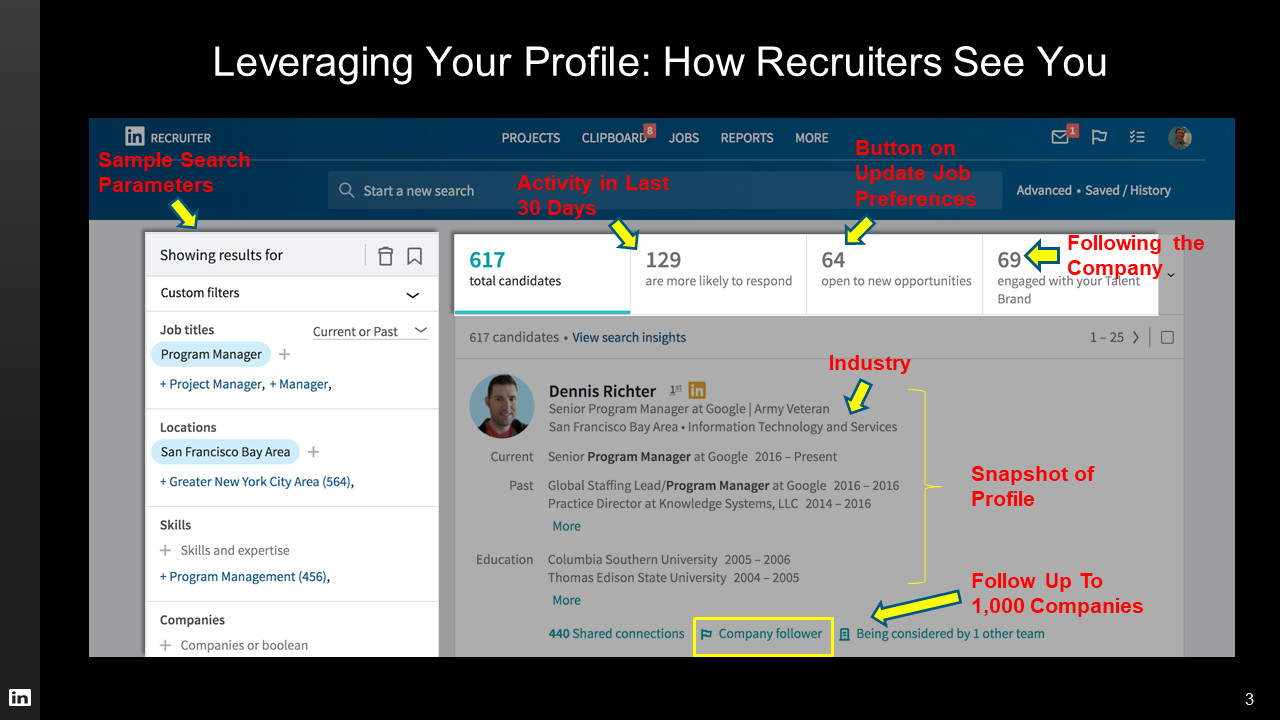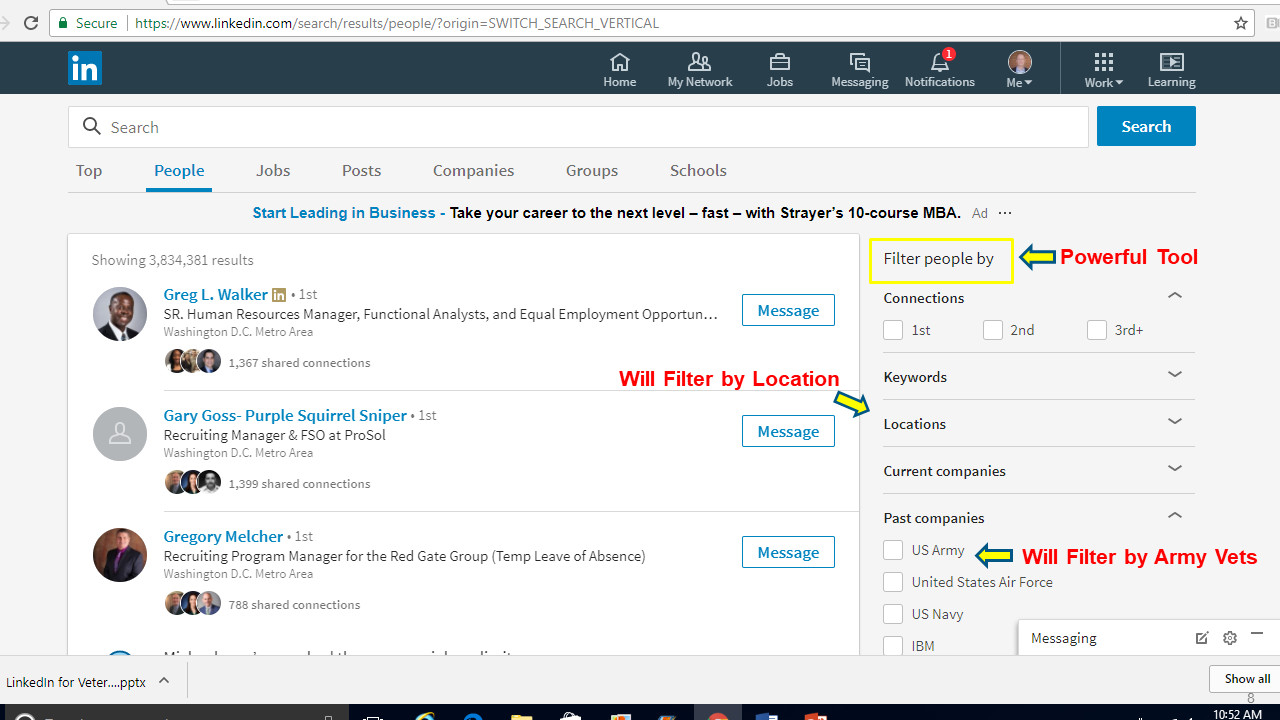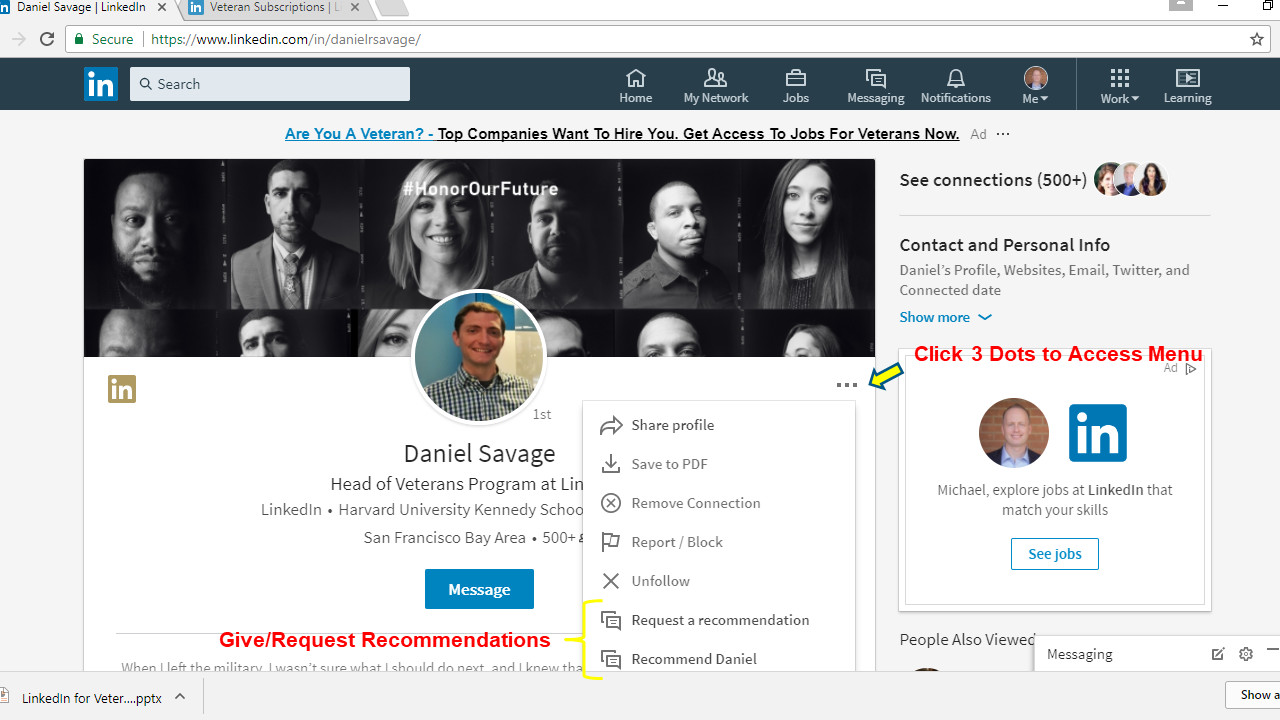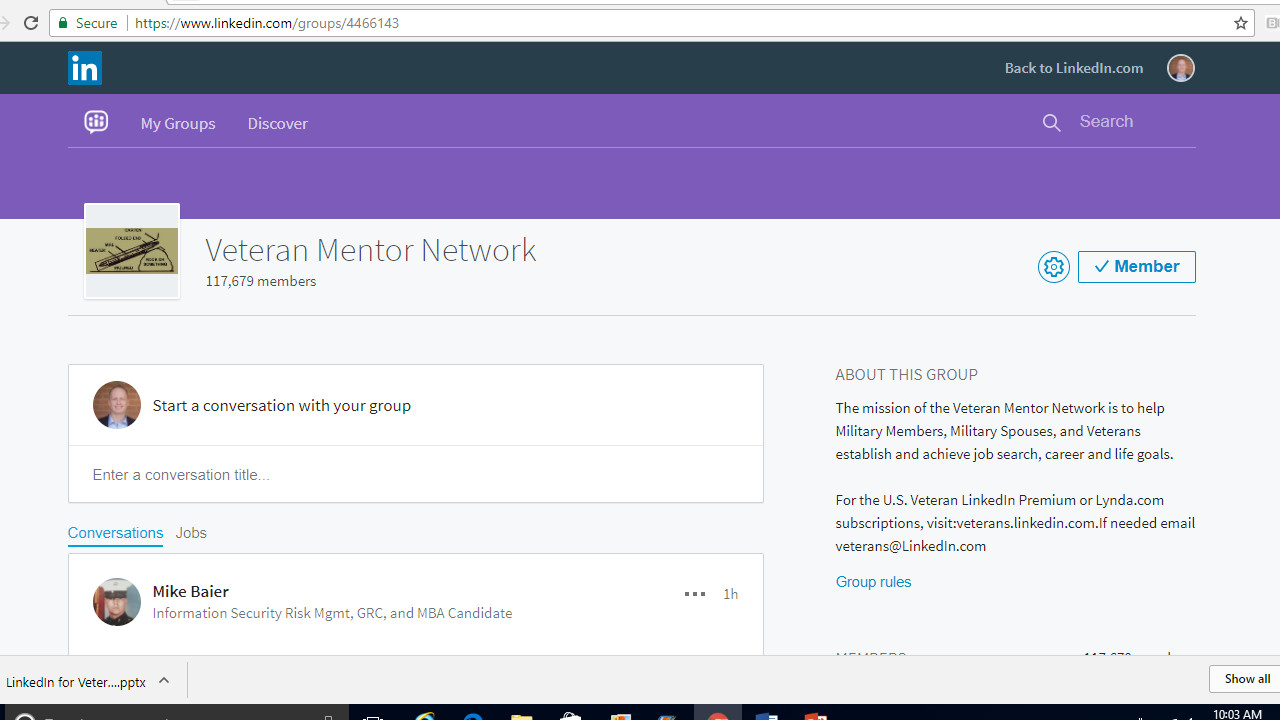By Michael Quinn – Ladders
In the early 90s, you could apply for a job by visiting companies and filling out an application or providing a resume. Does that happen anymore? No – because the internet disrupted this method of talent acquisition by giving both employers and employees far greater access to opportunity. The internet freed us from the geographic restrictions that existed when I was a kid.
Fast forward a decade and large employers needed to use application tracking systems to manage the hundreds of applications they receive online for every vacancy. The tremendous increase in applicants means potential employees need to do more (network for referrals, demonstrate culture fit) to stand out. Employers learned that culture fit is incredibly important and, with the high cost of finding replacements, looked for ways to determine fit before hiring an employee.
Now, social media and LinkedIn are disrupting the old resume-based talent acquisition model.
The industry has changed so much, so quickly that you now have less than a 4% chance of getting an interview through simply applying to job vacancies online. This is even after tailoring your resume, drafting a cover letter and filling out the detailed application perfectly. This is because you are competing with internal promotions and employee referrals, both of which jump ahead of you in candidate rankings.
LinkedIn is the key to overcoming this.
Through LinkedIn, employers get the resume along with an understanding of the potential employee’s network, mutual connections, online presence, endorsements, recommendations/referrals and their personal brand. The LinkedIn profile paints a much clearer picture of a potential employee’s fit with the culture of an organization.
LinkedIn is similarly powerful for job seekers. Not only does it identify job vacancies around the world, but strong networks can also share opportunities, give referrals (which increase your odds of landing a job 11x) and provide mentorship. A strong personal brand (supporting your objective) greatly supports your job search and allows recruiters from around the world to find you.
Many people understand the value of LinkedIn, yet need help navigating the platform, building their profile and developing their personal brand. I developed this “Cheat Sheet” to give everyone, regardless of social media experience, the ability to develop a personal brand and access the economic opportunity that LinkedIn provides. It is almost a step-by-step guide for setting up a profile with some advice for personal branding.
Keep in mind that your profile is a “living” document and should be updated or changed as events occur throughout your career. Also, note that your brand is enhanced through interaction and the sharing of insight with others. Stay active, stay engaged and the sky is the limit!
Setting Up Your Profile
You access your profile page by clicking the small picture of you (above the word “Me”) in the upper right corner of the screen, then clicking “View profile.”
Photo
This photo should a simple head-shot in clothing associated with the industry/role you are looking for. Smile and look dependable – don’t make it look like an angry/bland military service photo. There shouldn’t be anyone else or a distracting background in it, but it doesn’t have to be boring. Add some background color, texture or non-distracting images to improve your photo. Have someone take it for you because selfies always look like selfies. NOTE: Pictures that add to your brand or demonstrate skills can be uploaded in other areas of your profile.
Background photo
Adding a background photo makes your profile look more professional and demonstrates you’ve put the time in to learn. Google “LinkedIn background images” and find the image that speaks to you and your next career. Save it to your computer and, from your profile page, add it to your profile by clicking the “Update background photo” link to the right of your photo. You can see the link on the picture above.
Headline
Your headline should speak to your career, not necessarily what you do now. I recommend you make your headline the position title (an actual position you’d find on a job posting) you desire, followed by a “|” to separate thoughts, then a few words that really speak to your strengths. You can look at mine or others in your desired field for examples. Keep in mind that your headline features prominently on the platform and, if done well, can draw the attention of potential employers. Developing the right headline is not easy, so do your best and expect to change it along the way as your brand develops.
Veterans: I don’t recommend using transitioning, retiring, senior leader, senior executive or a similar word. These are not actual positions and don’t tell recruiters what job you are looking for. There are no “Senior Leader” jobs out there for us after we transition.
Summary
Your summary is not a bio, it is used to explain to employers how your skills translate into the new position. The idea is that you meet the required qualifications for the position for which you apply, so I recommend writing your summary to address the knowledge, skills, abilities, and experience that will make you successful. Focus on capturing the overall scope of your experience (# and $) in the first 3 lines, as these are critically important to capturing the reader’s attention. Be sure to sprinkle in keywords used in that field throughout the rest of the summary to ensure you are hitting the algorithms correctly. You can use a few paragraphs to do this, and it is important to tell your story appropriately using “corporate” terminology. Take a look at summaries from leaders in your desired industry to get an idea of what works. The idea is to catch the attention of the reader and clearly articulate why you are the right fit for the job.
How to Personalize Your URL
If you are putting your LinkedIn profile on resumes (and you should if they look good), you want your URL to look professional. Your URL is the web address people use to find your profile page (for example, mine is linkedin.com/in/quinnmi). Just go to your profile page (on a laptop) and click “Edit Your Public Profile” on the top right. On the right side of the screen that pops up, you will see a little pencil next to your current URL under the part that says “Edit URL.” Click that pencil to change your URL to something professional.
To create a profile that aids your job search, it is incredibly important that you know how recruiters see you on LinkedIn. See the below screenshot from LinkedIn Recruiter to get a better understanding.

As you can see above, LinkedIn sorts or “bins” the results into a few different categories to help recruiters prioritize efforts. Taking this into consideration can increase the likelihood that you will be contacted.
More Likely to Respond. Results are sorted into this category to tell recruiters whether messages or InMails are likely to be seen and/or responded to. You will fall into this category if, at a minimum, there is activity on your profile within the last 30 days. I recommend taking just a few minutes every day to check LinkedIn – it will keep your profile current.
Open to New Opportunities. You populate in this category if you have turned on the button that states you are “Open to Opportunities.” I provide information on how to reach this button later in the article.
Engaged with Your Talent Brand. You fall into this category if you are “Following” the company. Since you can follow up to 1,000 companies, I recommend you follow a ton of companies that interest you.
Leveraging Your Profile
Keep in mind that searches/queries usually start with the current position title, past position title, location, skills, and education. Your ranking in the results (by the algorithm) is based on the usage of keywords and how well you match the search criteria.
Location
This should be where you want to work. Recruiters start their searches with a location, but you are narrowing down your opportunities by limiting it to a small area. I recommend changing it to the closest metropolitan area to where you plan to settle. If there is an option to do so, always choose the one with “area” at the end. For example, choosing Washington DC Area will give you a much larger range than just Washington DC.
Experience
You need to break down at least the last 10 years of jobs (if you have them), then you can lump in the rest (unless it adds to your brand to list them all). Take the time to add a description and significant accomplishments to each job – it gives you additional opportunities to include keywords for the algorithms.
Veterans: Make sure that when you type company, the US Army (or other military services) logo appears – that is how you are recognized as a veteran by the algorithms. There is an actual button on LinkedIn Recruiter that, when checked, will only show veterans in the results. You will not populate as a veteran unless one of your jobs has your military service and logo as the “company” in your experience.
Veterans: One thing that makes us lucky as veterans is that our job titles don’t directly translate into our next career. This gives you the flexibility to change the title to match a civilian equivalent; just make sure there is actually a civilian equivalent. Then you can write the accomplishments and responsibility to match the field you desire to work in. Take a look at mine for an example. This is important because recruiters conduct searches based on current and past titles. For example, if they are looking for a Project Manager, you will not populate in their search results if it is nowhere on your profile. Keep that in mind.
Education
Your highest-level (most prominent) degree should also be listed first, but include all of your degrees. There is an alumni function that will tell you (and others) if someone from your school works at a particular company. Why waste the chance to have something in common? Note: Age discrimination can be an unfortunate reality and I recommend you do not list the years when you obtained your degree.
NOTE: You can re-order your education by clicking the 4 horizontal lines that appear below the pencil on any of your degrees or school entries.
Skills are incredibly important for identifying candidates AND determining your fit for a position based on a glance at your profile. Recruiters list applicable skills when setting up candidate queries, which is why I recommend that everyone adds the maximum of 50 to their profile. Based on your career choice, your skills should reflect every position requirement skill to ensure you are qualified.
One of the easiest ways to identify the right skills is by using your premium insights for jobs. Do a search on the “Jobs” tab for the position title you desire. Click on several of the open positions and premium insights will identify what the top-10 skills are for the people that have already applied for the job. Sometimes you just didn’t think to add them, and can now do so to improve your profile.
You can also identify skills through keyword searches on interesting job descriptions and by reviewing the profiles of successful leaders in your desired field.
Veterans: Keeping in mind that only 1% of the population served, you should remove the military-specific skills from your profile that don’t apply to your desired job. The 99+ endorsements you received for Weapons Handling probably won’t help you get a position in the Human Resources field.
Tip: Your top 3 skills are more likely to gather endorsements. Reorder your skills to support your profile development by clicking the pencil next to “Add a new skill.” Once the new window opens, you can remove a top-3 skill by clicking a blue pin. You select a new top-3 skill by clicking any white pin to make it blue, at which point it automatically populates at the top of your skill list. Note that you can also reorder skills within a subcategory by dragging the three horizontal lines next to a particular skill either up or down.

How to find Mentors or Connections: In the search bar at the top left of your screen, type the title of the position you are looking to find after your transition. Once it populates with results, click on the “People” tab. Now we can refine the results to find mentors in the area you want to live that are also Veterans from your branch of service.

To the right of your results is the “Filter People By” section. Under the location part, click the box of the location where you want to retire (nearest metropolitan area is best). If it is not listed, just click the +add box and start typing your location – it will populate and then you can click it.
Now go to “Past Companies,” which is located a few sections down from the location filter. Add the branch of service by clicking “Add” and starting to type US Army, US Navy, US Air Force or US Marine Corps.
The search results will populate with people in the position you are looking for, in the area you want, that are Veterans from your branch of service. Once your profile looks good (from following my advice above), find the best matches and send them an InMail asking for a few minutes to get some mentorship, connect or conduct an informational interview.
Free 1 Year LinkedIn Premium: To get your free one year of LinkedIn Premium, go to veterans.linkedin.com Scroll down the screen and click on the appropriate box.

This will open a new page that utilizes ID.me to determine if you are a veteran. Click the blue box titled “Log in with Troop ID” to start the verification process.

How to Request or Provide Recommendations: Recommendations are a great way to add credibility to the accomplishments or skills you’ve listed on your profile. To request or give a recommendation, go to that person’s profile. Click the three dots to the right of their profile picture, then select either “Request a Recommendation” or “Recommend” For those that have never done it before, you will be prompted to approve any recommendation written for your profile. Nobody can put a recommendation on your profile without your authorization.

Hopefully this “cheat sheet” helps you establish your brand and find the job that fits you. All I ask is that you pay it forward – share the document or your personal experience freely so that others have the same opportunity. #VeteranBranding #UltimateLinkedInCheatSheet.





Leave a Reply
You must be logged in to post a comment.